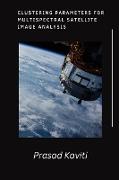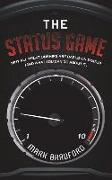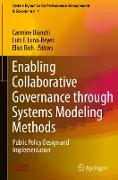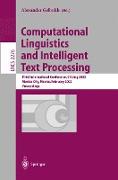Clustering Parameters for Multispectral Satellite Image Analysis
BücherAngebote / Angebote:
Clustering parameters for multispectral satellite image analysis is a method used in image processing and remote sensing to extract useful information from satellite images. Clustering is an unsupervised learning technique that groups similar pixels together based on their spectral and spatial characteristics.
The process of clustering in multispectral satellite image analysis involves using various parameters to extract relevant features and reduce the dimensionality of the data. Spectral information, such as the reflectance values of different spectral bands, is used to group similar pixels together. Spatial information, such as the location and shape of the clusters, is also considered.
Different clustering algorithms can be used, such as K-means, Expectation-Maximization, hierarchical clustering, density-based clustering, and spectral-spatial clustering. The choice of algorithm and parameters will depend on the specific application and the desired level of accuracy for the image segmentation and classification.
To evaluate the performance of the clustering, various validation metrics can be used, such as the confusion matrix, overall accuracy, F1-score, Jaccard similarity coefficient, and Kappa coefficient. These metrics provide a quantitative measure of the clustering performance and can be used to compare different clustering methods and parameters.
Overall, Clustering Parameters for Multispectral Satellite Image Analysis is a powerful method for extracting useful information from satellite images and it is widely used in various applications such as land use/land cover mapping, crop identification, and natural resources management.
Image analysis is a widely used technique, which is necessary for understanding and
speculating speci¿c aspects of the information. Images are analyzed and pro- cessed to help single
users, professional bodies, and government organizations. In today's world, remotely sensed
multispectral images processing is a major research area used to deal with problems such as
landuse-landcover, ¿re detection, crop es- timation, and ¿ood prediction to name a few, which
greatly impact the economic and environmental concerns, and the techniques developed through this
technol- ogy allows many real-life applications with high social value [CVTGC+11].
Classi¿cation is the most common operation used to analyze these multispec- tral images. The
critical objective of the image classi¿cation technique is to group all pixel data of an image into
land cover classes or thematic maps automatically [JL05]. In general, multispectral images pixels
have an inherent spectral pattern which is the numerical basis for the classi¿cation of
multispectral images i.e. the inherent spectral re¿ectance and emittance properties of the
electromagnetic spec- trum are indexed with di¿erent combinations of Digital Numbers in the image
to
recognize various types of features or objects. Spectral pattern recognition is a classi¿cation procedure that performs automated landcover classi¿cation with the help of pixel-by-pixel spectral information. Remote sensing is one of the e¿cient ways to procure multispectral images. Re- mote sensing is a
procedure to acquire data from any distance without physically interacting with objects. Remote
sensing can be made possible with the help of satellites or aircrafts which have sensors mounted
on them to capture electromag- netic radiation scattered or emitted from the Earth's surface.
Folgt in ca. 5 Arbeitstagen




